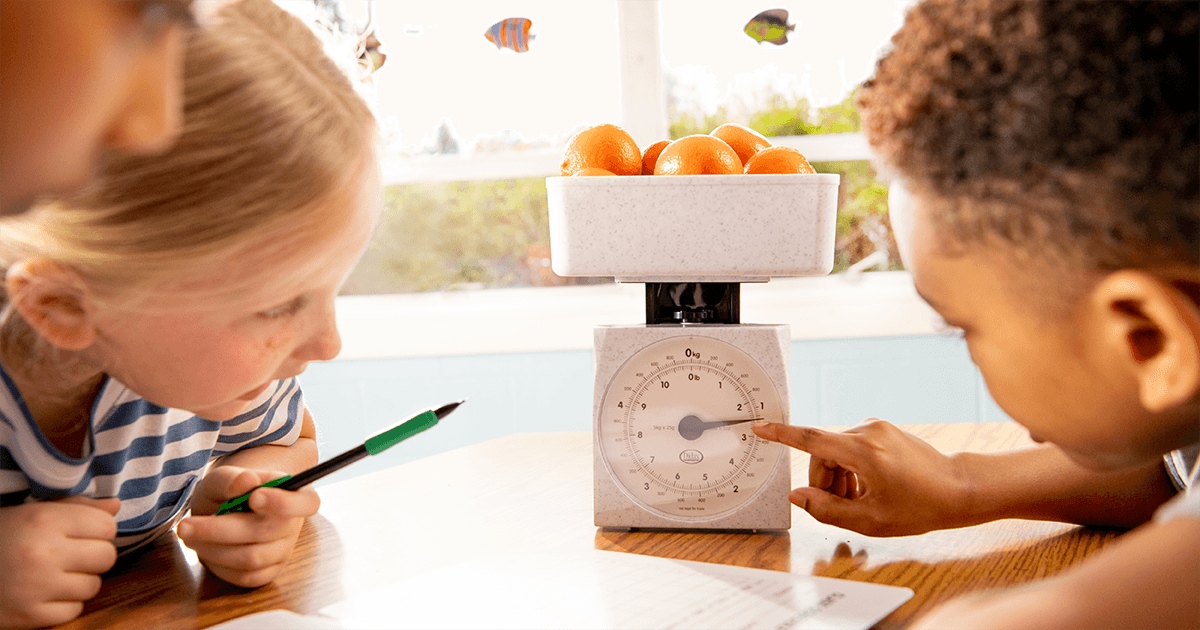Posted in: Aha! Blog > Eureka Math Blog > Instructional Design > The Progression of Grade 7 Modules
This blog examines the Grade 7 Modules in A Story of Ratios. Consider the following as an example of the intentional trajectory of the Grade 7 Modules
MODULE 1:
Throughout Grade 6 students build a strong knowledge of ratios, rates, and units rates. In the first module of Grade 7, students build upon this knowledge to formally define proportional relationships and the constant of proportionality. This concept develops even further when students are introduced to rates with rational numbers. For example, students use rates to determine the better buy between 3 1/3 pounds of turkey that costs $10.50 or 2 1/2 pounds of turkey that costs $6.25. Establishing a strong foundation with rational numbers in earlier grades is critical as the complexity increases in Grade 7. Students use models, such as tape diagrams and double number lines (shown below), to assist in the understanding and solving of these complex problems. Finally, students connect proportional relationships to the context of scale drawings as they relate unit rates and the constant of proportionality to the scale factor.

Module 2:
In the second module, students are introduced to operations with integers and other rational numbers. Although students were introduced to integers in Grade 6 Module 3, their work with integer operations does not begin until Grade 7. Through the use of the number line and the Integer Game, students develop an understanding on how to evaluate expressions with rational numbers. Notice how the arrows show length and direction and the length of the arrow on the number line is the absolute value (addressed in Grade 6 Module 3) of the integer. Also, adding several arrows is the same as combining integers in the Integer Game. The work with rational numbers that students complete in Module 1 will carry over when students start working with negative rational numbers later in Topic A

Near the end of the module, students are briefly introduced to if-then statements through the use of the Integer Game. They explore how making the same change to two equal card-hand totals, results in a true number sentence. This introduction to expressions and equations in Topic D of this module is an important foundation for the next module since the if-then statements are important when solving algebraic equations.
MODULE 3:
Using their previous knowledge of associative, commutative, and distributive properties, students learn to write expressions in both standard form and factored form. Students continue to build their knowledge of writing and solving equations through unknown angle problems and other Geometry concepts. As their confidence with solving equations continue to grow, students are introduced to inequalities and how negative numbers have an impact on whether the inequality sign is preserved or reversed. Without the knowledge gained in Module 2, students are unable to evaluate the expressions or solve the equations presented throughout this module. Near the end of the module, students are introduced to the area and circumference of circles and further develop their knowledge of expressions and equations when solving problems dealing with circular regions.

The focus on Geometry continues throughout the rest of the module by using expressions and equations to calculate the area, perimeter, volume, and surface area of a variety of two-dimensional and three-dimensional shapes.

Module 4:
After being introduced to proportional relationships in Module 1, students continue their work with proportional relationships in Module 4. At the beginning of this module, students build on their knowledge of the relationships between fractions, decimals, and percents from Grade 6 Module 1. Students learn to recognize 100% as the whole and use this knowledge to write equations to solve multi-step percent problems. Students use the knowledge they developed in earlier modules to use and solve the equation Quantity = Percent x Whole. Students apply this equation to solve both percent increase and percent decrease problems

As the complexity increases, students apply their previous knowledge of proportional relationships and absolute value to solve a variety of problem types including markups, markdowns, simple interest, sales tax, commissions, fees, and percent error. Students are encouraged to use models practiced in earlier modules to help develop a plan to solve these more complex problems. In Module 1, students constructed scale drawings, determined scale lengths and areas given the actual quantities and the scale factor (and vice versa). The work of Module 4 adds a new complexity since the scale factor is represented as a percent, showing students this connection and further solidifying their understanding of proportional relationships.
MODULE 5:
Students continue to witness the relationship between fractions, decimals, and percents in Module 5 when they are introduced to probability. Students learn how to calculate the theoretical probability of different events and how this differs from the estimated probability. In instances where data collection is not possible, students learn to create simulations in order to collect data to make informed decisions. Students also use their knowledge of rational numbers to compute the probability of compound events using lists, tables, and tree diagrams. In the second half of the module, students continue to develop their knowledge of statistics that started at the end of Grade 6. Through random sampling, students are able to make informal inferences and estimate a population mean. The module concludes with students comparing two populations with similar variability.

MODULE 6:
The final module of Grade 7 summarizes the knowledge gained throughout the entire year. It starts with further developing students’ ability to calculate unknown angles using new angle relationships and their knowledge of equations, extending the learning of Module 3. After the unknown angles, students use a ruler, compass, and protractor to construct geometric shapes. Through these constructions, students create a list of conditions that determine unique triangles. Following these constructions, students determine what two-dimensional shapes result from slicing three-dimensional figures. In the final two topics of the grade level, students continue to develop their understanding of area, surface area, and volume, again building upon the learning in Module 3. As the level of complexity increases through the final lessons, students are required to use their knowledge gained throughout the entire year to experience success.

At first glance, it may not seem that changing the order of the modules will have an impact on student success. However, it is important to recognize the intentionality in the order of each module and individual lesson. Similar to storybooks, where it is crucial to read each chapter in order, A Story of Ratios was written with the intention of being followed sequentially
This blog post is authored by Krysta Gibbs, a Eureka Math middle school teacher-writer.
Submit the Form to Print

Krysta Gibbs
Topics: Instructional Design











